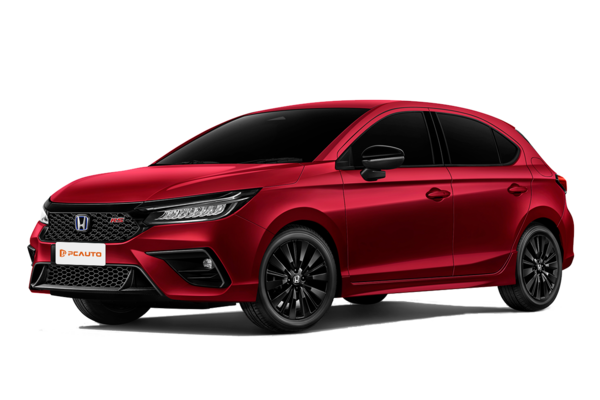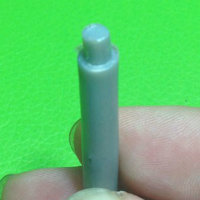Q
toyota or honda which is better
Toyota and Honda are both super popular Japanese brands in the Malaysian market, each with their own strengths—ultimately, the choice boils down to what you're personally after. Toyota's known for bulletproof reliability and strong resale value, especially models like the Vios and Hilux, which you see everywhere on Malaysian roads. Maintenance and repair costs are pretty reasonable too, making them a solid pick if you prioritize practicality and plan to keep your ride for the long haul.
Honda, on the other hand, leans more into sportiness and tech. Take the City or HR-V, for example—they’re more fun to drive, with nimble handling. Their Earth Dreams engine tech also does a nice job balancing power and fuel efficiency, which hits the spot for younger drivers who want a bit more excitement behind the wheel.
Both brands have got decent after-sales service networks across Malaysia, but Toyota parts might be easier to find since their cars are so common. Honda, though, tends to pack more features into some of their models. It’s worth remembering Malaysia’s climate and road conditions can be tough on cars, so definitely test drive both before deciding. Also, check out the used car market—Toyota usually holds its value a smidge better.
When it comes to hybrids, Toyota’s hybrid tech is more established, but Honda’s been catching up fast lately. Either way, both are solid choices if you’re into eco-friendly driving.
Special Disclaimer: This content is published by users and does not represent the views or position of PCauto.
Popular Models
Related Q&A
Q
Is rpm the same as horsepower?
RPM (Revolutions Per Minute) and horsepower are not the same concept. RPM refers to the number of rotations an engine makes per minute and is a unit for measuring engine speed; horsepower (HP), on the other hand, is a unit of power for measuring an engine's work capacity. The two are closely related. The calculation of horsepower requires combining torque and RPM, for example, using the formula: horsepower = torque × RPM ÷ 5252 (imperial conversion) or ÷ 9549 (metric conversion). Higher RPM generally enables an engine to produce more horsepower, but the actual output also depends on parameters such as torque, and the engine's horsepower performance varies across different RPM ranges.
Q
What is the rpm of a 0.5 hp motor?
The rotation speed of a 0.5 hp motor is not a fixed value; it depends on the motor type, number of pole pairs, and application scenario. In AC asynchronous motors commonly used in Malaysia, the rotation speed is closely related to the power supply frequency and the number of pole pairs. Malaysia's power supply frequency is 50 Hz, and the synchronous speed is calculated by the formula n = 60f/p (where f is the frequency and p is the number of pole pairs). For example, the synchronous speed of a 2-pole asynchronous motor is 3000 rpm, and the actual operating speed is slightly lower due to the slip, approximately 2800-2900 rpm; the synchronous speed of a 4-pole motor is 1500 rpm, with an actual speed of about 1400-1450 rpm; and a 6-pole motor has a synchronous speed of 1000 rpm, with an actual speed of around 950-980 rpm. In the Malaysian market, 0.5 hp motors are widely used in small household water pumps, fans, or small industrial equipment. Different brands (including local brands and models sold in Malaysia by international brands) offer products with different numbers of pole pairs according to requirements. Users need to choose based on the application: for high-speed requirements (such as some ventilation fans), 2-pole motors can be selected; for medium-speed and high-torque requirements (such as small water supply pumps), 4-pole motors are suitable; and for low-speed and high-torque scenarios, 6-pole motors can be chosen. When purchasing, users can confirm whether the rated speed marked on the motor nameplate matches the specific usage requirements.
Q
How to calculate rpm of motor?
The calculation method of motor speed varies depending on the type of motor. For synchronous motors, their speed is directly related to the power supply frequency and the number of pole pairs, with the calculation formula being n = (60×f)/p, where n represents the speed (in rpm, i.e., revolutions per minute), f is the power supply frequency (in Hz), and p is the number of pole pairs of the motor (the number of pole pairs is equal to the number of poles divided by 2). The actual speed of an asynchronous motor is lower than the synchronous speed, so the slip ratio needs to be introduced for calculation, with the formula n = (60×f/p)×(1 - s), where s is the slip ratio (usually expressed as a decimal, generally between 0.01 and 0.05 at full load). The speed calculation formula for a DC motor is n = (U - Iₐ×Rₐ)/(Cₑ×Φ), where U is the armature voltage, Iₐ is the armature current, Rₐ is the armature circuit resistance, Cₑ is the motor constant, and Φ is the flux per pole. For example, if the power supply frequency is 50 Hz and the number of pole pairs is 2, the speed of the synchronous motor is 60×50÷2 = 1500 rpm; if it is an asynchronous motor with a slip ratio of 0.03, the actual speed is 1500×(1 - 0.03) = 1455 rpm. Mastering these calculation formulas helps to understand the working principle of motors, evaluate their performance and energy consumption, thereby selecting and applying motors more reasonably.
Q
Is RPM related to HP?
RPM (revolutions per minute) and HP (horsepower) are directly linked because horsepower is calculated using torque and engine speed. The formula is HP = (Torque × RPM) ÷ 5252, meaning at the same torque level, higher RPM results in greater horsepower.
Engine performance curves typically show how horsepower and torque change across the RPM range. Naturally aspirated engines usually hit peak horsepower at higher RPMs, while turbocharged engines often deliver max horsepower at lower RPMs—thanks to forced induction improving low-end torque.
Understanding this helps when choosing or modifying a car. If you enjoy high-revving driving, a naturally aspirated engine might be your pick. But if you prioritize low-RPM grunt for daily driving, turbocharged models are better suited.
Also, transmission gear ratios play a role in how well the engine stays in its optimal RPM range, balancing power delivery and fuel efficiency. Getting the ratios right means better throttle response and mileage.
Q
What is the RPM of 10 hp?
The RPM range of a 10-horsepower engine depends on its type and application. For instance, a single-cylinder diesel engine in small generators or farm equipment might run between 1,800 and 3,600 RPM, while a high-revving motorcycle engine could exceed 8,000 RPM.
The relationship between power and RPM is determined by torque, calculated as: **Horsepower = Torque (Nm) × RPM ÷ 5,252**. This means a low-RPM engine needs higher torque to achieve the same power output, whereas a high-RPM engine produces less torque.
In everyday cars, idle speeds typically sit at 700–900 RPM, with full-throttle operation reaching over 6,000 RPM—though those engines are far more powerful than 10 hp. For small equipment, RPM selection balances efficiency and durability. Pumps or lawnmowers often use fixed-speed designs for better fuel economy, while construction gear may adjust RPM to match load demands.
For exact specs, always check the engine’s nameplate or manual—factors like air/liquid cooling or two-/four-stroke design significantly impact performance.
Q
What is the maximum hp of a car?
The current production car horsepower record is held by elite hypercar brands. Take the Bugatti Chiron Super Sport 300+ – its monstrous 8.0-liter W16 quad-turbo engine churns out 1,600 horsepower. Then there's the Koenigsegg Jesko Absolut, whose 5.0-liter V8 twin-turbo pushes 1,623 ponies when running on E85 biofuel. These extreme machines use every trick in the book: featherlight carbon fiber bodies, cutting-edge aerodynamics, and multi-turbo systems to chase those insane numbers.
But let's be real – horsepower isn't everything. Torque, drivetrain efficiency, weight, and chassis tuning matter just as much. For daily driving? A modest 200-300 hp in your average family sedan is plenty. Even performance cars in the 400-600 hp range will satisfy most speed cravings.
What's interesting is how hybrid tech is changing the game. Many modern performance cars now use electric motors to boost power while keeping efficiency somewhat reasonable. My advice? Match the horsepower to your actual needs – no point paying at the pump for power you'll never use.
Q
Can a car have 800 horsepower?
Sure thing. Right now, there are quite a few high-performance cars on the market pushing 800 horsepower or even more. These beasts usually fall into the supercar or heavily modified performance car category—think flagship models from top-tier brands or professionally tuned builds. They achieve that insane power through massive engines, turbocharging, or hybrid systems.
An 800-horsepower car is brutally quick, often hitting 0-100 km/h in under 3 seconds, but it also demands serious skill to handle, not to mention upgraded cooling and braking systems. Keep in mind, though, that this much power isn’t exactly practical for daily driving—it’s more at home on a track or special occasions. Local factors like fuel quality, road conditions, and legal restrictions also come into play.
If you’re into high-performance machines, follow expert auto media or test-drive events to experience them firsthand. Just remember to pick a car that actually suits your needs—not just the numbers on paper.
Q
What should my RPM be at 100?
When you're cruising at 100 km/h, your engine's RPM depends on several factors like transmission type, engine displacement, and gear ratios.
With a manual transmission in top gear (usually 5th or 6th), you might see the tachometer sitting between 2,500 and 3,500 RPM. Automatic transmissions, on the other hand, tend to keep revs lower—around 2,000 to 3,000 RPM—thanks to their adaptive tuning for better fuel efficiency.
Smaller turbocharged engines may run slightly higher RPMs, while larger naturally aspirated engines often maintain lower revs at the same speed. Other variables like vehicle load, road incline, and driving mode (sport vs. eco) also play a role.
Keeping RPMs in the right range during highway driving not only saves fuel but also reduces engine wear. If you notice unusually high or low revs at speed, it’s worth checking transmission fluid, clutch health, or sensors to avoid long-term issues.
Q
What vehicle has the highest horsepower?
The most powerful production car in the world right now is the Bugatti Chiron Super Sport 300+. Its monstrous 8.0-liter quad-turbo W16 engine churns out an insane 1,600 horsepower, with a top speed of 490 km/h - absolute peak internal combustion engineering.
That said, electric hypercars are starting to push boundaries too. Take the Rimac Nevera: 1,914 hp from its four-motor setup proves EVs have serious performance potential.
For us car enthusiasts, horsepower is just one piece of the puzzle. Things like torque delivery, transmission tuning, weight distribution, and aero make all the difference in real-world driving. Some high-performance SUVs might not match supercars on paper, but clever AWD systems and well-sorted suspension can deliver just as much excitement.
Truth be told, excessive power means little in daily driving. Reliability, fuel efficiency, and safety tech matter far more to most buyers. At the end of the day, a well-balanced package always wins.
Q
How to convert RPM into power?
Converting RPM (revolutions per minute) to power (usually measured in horsepower or kilowatts) requires factoring in engine torque, because power is calculated as: Power (kW) = Torque (Nm) × RPM ÷ 9549, or Power (HP) = Torque (lb-ft) × RPM ÷ 5252. Simply put, the torque an engine produces at a given RPM determines its power output—so you can’t translate RPM into power without torque data.
Different engines have distinct torque curves. A turbocharged motor, for example, might deliver peak torque at lower RPMs, while a naturally aspirated engine often needs higher revs to hit its max power. Real-world performance also depends on transmission and drivetrain efficiency, which is why two cars with the same horsepower can feel totally different on the road.
For a deeper dive, check out an engine’s powerband curve—it maps how torque and power relate to RPM, showing where the engine performs best. That’s the key to understanding what really happens under the hood.
Popular Cars
Model Year
Car Compare
Car Photo
Latest Q&A
Q
What is a 10 fuel?
E10 fuel refers to a motor gasoline engine fuel blended from 90% gasoline (or unleaded gasoline components) and 10% denatured fuel ethanol. Here, the "E" stands for ethanol, and the number 10 indicates that ethanol accounts for 10% of the mixture by volume. This fuel has environmental benefits: the combustion products of ethanol are mainly water and carbon dioxide, which can reduce emissions of harmful gases such as carbon monoxide and nitrogen oxides in exhaust fumes. Meanwhile, ethanol has a high octane rating (approximately 111), which enhances the fuel's anti-knock performance and lowers the risk of engine knocking. Additionally, ethanol is a renewable energy source that can be produced from grains, plant fibers, etc. Using E10 helps reduce dependence on petroleum resources. However, when using E10, note its strong hydrophilic properties—it readily absorbs moisture from the air, potentially causing phase separation. Its shelf life typically ranges from 15 to 25 days, so it is recommended to use it within 15 days. Furthermore, ethanol may slightly dissolve engine deposits, so it is advisable to increase oil change frequency appropriately. In some regions, E10 corresponds to 92-octane gasoline and is compatible with most vehicles designed for 92-octane fuel, with minimal impact on engines. Therefore, vehicle owners need not be overly concerned.
Q
What's the difference in fuel types?
Common fuel types in Malaysia mainly include RON95 gasoline, RON97 gasoline, and diesel. The core differences primarily lie in the octane rating (RON value): RON97 gasoline has a higher octane rating and superior anti-knock properties, making it theoretically suitable for high-compression-ratio or high-performance engines, thereby delivering smoother combustion efficiency. RON95 gasoline, with a lower octane rating, is the most widely used fuel locally. Most household vehicles (such as the Jaecoo J7 and 2019 Kia Cerato) have engines optimized for this fuel, balancing a power output of approximately 156 horsepower with fuel efficiency, while also being well-suited to Malaysia's hilly terrain and urban traffic congestion. In terms of pricing, RON95 is more affordable due to government subsidies, whereas RON97 is unsubsidized and more expensive. The actual driving experience between the two is marginally different, making RON95 the more cost-effective choice for average car owners. Diesel and gasoline are chemically incompatible, and their mixture is strictly prohibited as it can cause engine damage. Additionally, foreign nationals in Malaysia are only permitted to use RON97 or higher-grade fuels; using RON95 constitutes a violation. Gasoline typically contains detergent additives to maintain fuel system cleanliness. For car owners, regularly using manufacturer-recommended additives proves more economical than indiscriminately opting for higher-octane fuels.
Q
What type of fuel is petrol?
Gasoline belongs to the category of fossil fuels. It is a volatile and flammable liquid mixture of hydrocarbons refined from petroleum. It is mainly composed of C5 to C12 aliphatic hydrocarbons, naphthenes and a certain proportion of aromatic hydrocarbons, with a distillation range of 30°C to 220°C and a density between 0.70 and 0.78 g/cm³. It is flammable and volatile, and is classified as a low-flash-point liquid in Class 3 flammable liquids in the hazardous chemical classification. As the primary fuel for spark-ignition internal combustion engines, gasoline is widely used in vehicles such as cars, motorcycles and speedboats. Its performance is typically distinguished by octane rating, with common grades including No. 90, No. 93, No. 95, etc. Different grades correspond to varying anti-knock combustion characteristics to accommodate the requirements of various engines. In addition, gasoline can also be categorized into motor gasoline, aviation gasoline and solvent gasoline based on its application. Solvent gasoline is commonly used for industrial cleaning or as a chemical feedstock.
Q
What are the 4 fuel groups?
According to relevant standards, the four major categories of fuels are gaseous fuels (Group G), liquefied gas fuels (Group L), distillate fuels (Group D), and residual fuels (Group R). Gaseous fuels are mainly composed of methane, ethane, or their mixtures; liquefied gas fuels are primarily made up of propane-propylene, butane-butylene, or their blends; distillate fuels include petroleum fuels such as gasoline, kerosene, and diesel, excluding liquefied petroleum gas, and some may contain a small amount of heavy distillate oil; residual fuels are mainly derived from distillation residual oil. These fuels play important roles in different scenarios: for example, gaseous fuels are commonly used for household heating and industrial production, liquefied gas fuels are suitable for daily cooking and powering some vehicles, distillate fuels are the core power source for transportation tools like cars and airplanes, and residual fuels are mostly applied in equipment with high energy demands such as large ships or industrial boilers.
Q
What are the six basic fuel types?
The six basic fuel types are solid fuels, liquid fuels, gaseous fuels, fossil fuels, biofuels, and nuclear fuels. Solid fuels include coal, wood, coke, etc., which have high calorific value and are commonly used in power generation or industrial heating scenarios; liquid fuels such as gasoline, diesel, and kerosene have high energy density and flexible transportation, serving as the main power source in the transportation field; gaseous fuels cover natural gas, liquefied petroleum gas, biogas, etc., which burn cleanly and efficiently and are suitable for household cooking, heating, and industrial production; fossil fuels include coal, oil, and natural gas, which are naturally formed by geological processes and are the core component of current global energy consumption; biofuels are derived from animal and plant resources, such as ethanol and biodiesel, and have renewable characteristics, which can be used as alternative options to traditional fuels; nuclear fuels are mainly composed of radioactive elements such as uranium and plutonium, which release energy through nuclear reactions and are used in nuclear power generation, with the advantages of large energy output and no greenhouse gas emissions. These fuels play key roles in different fields and together form a diversified energy supply system.
View MoreLatest News

Wuling Bingo EV 2025 model launched in Malaysia, adding a strong contender to the entry-level pure electric market
AshleyDec 25, 2025

Tax exemption policy is coming to an end, Malaysia's electric vehicle registrations in November increased by 25% month-on-month to 5,417 units
Kevin WongDec 25, 2025

For safety reasons, the Chinese government may ban fully concealed door handle designs
MichaelDec 24, 2025

"Consumer Reports" Used Car Reliability Rankings Released: Lexus and Toyota Perform Steadily, Continue to Lead
AshleyDec 24, 2025

Zeekr's First Anniversary in Malaysia: Over 2,000 Deliveries, High-Performance Car 7X Becomes a Highlight
Kevin WongDec 24, 2025
View More




 Cars
Cars















